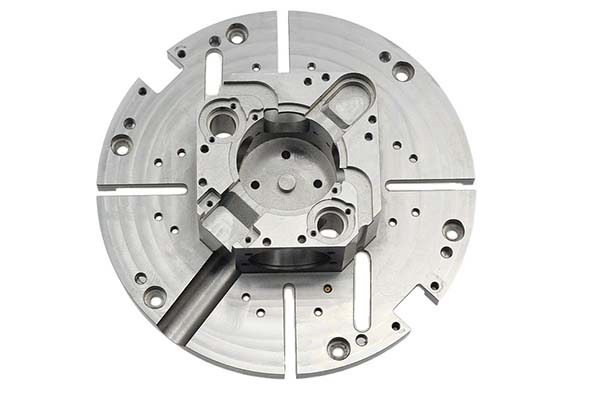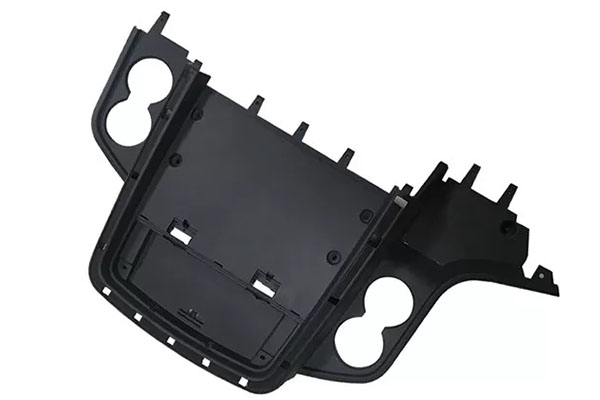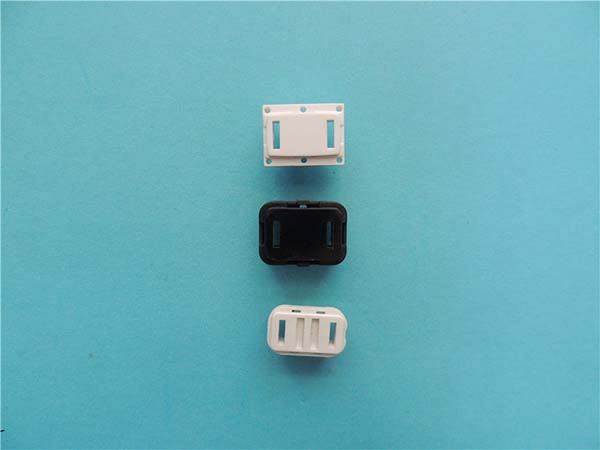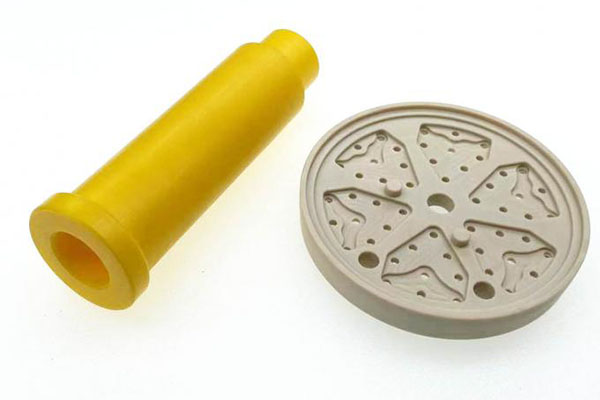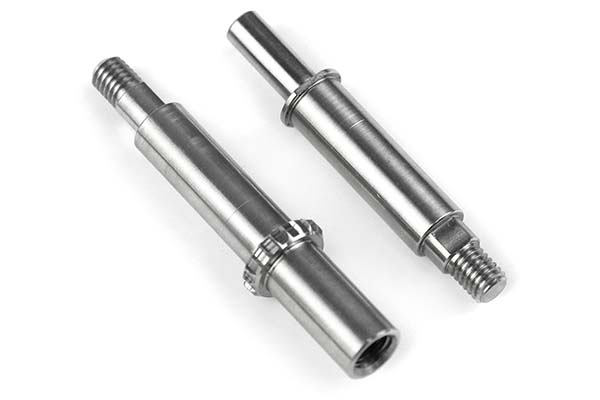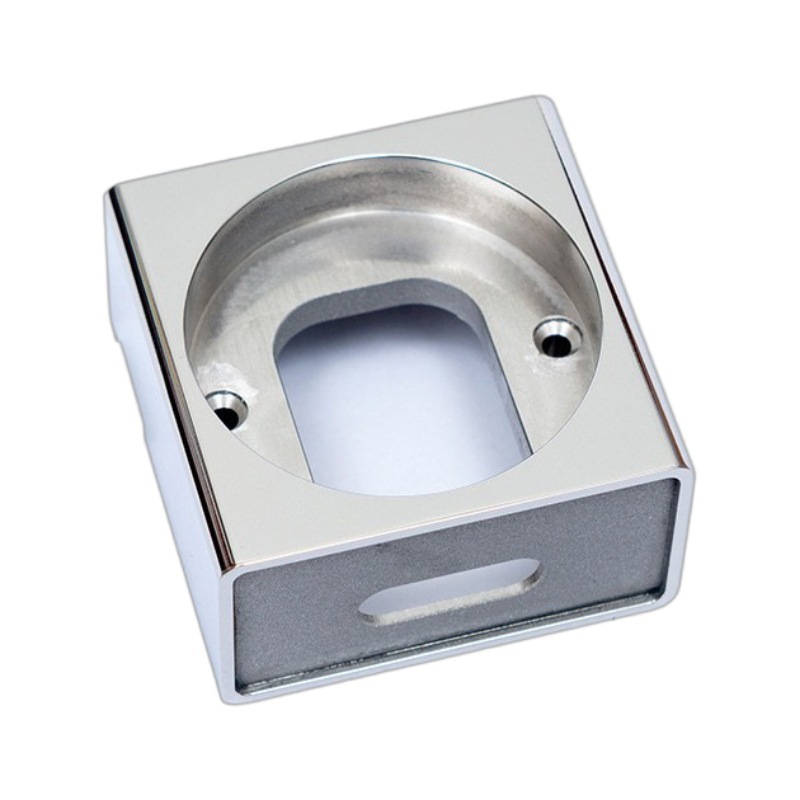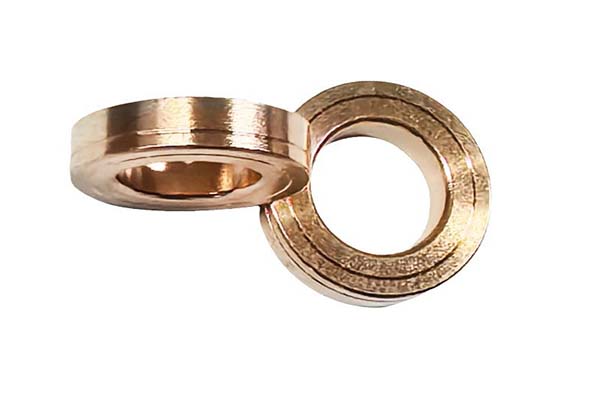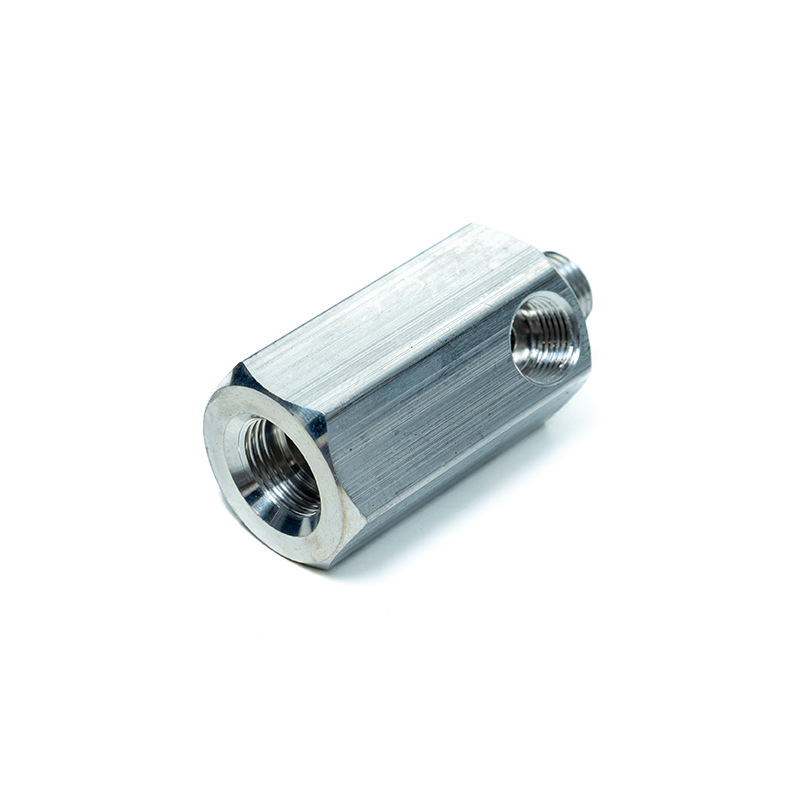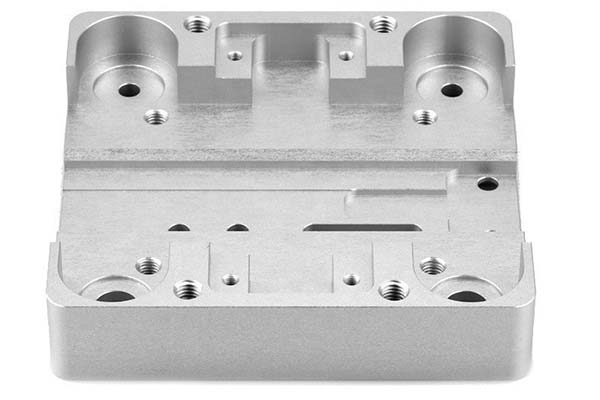8620 steel is a versatile low-alloy steel prized for its exceptional case-hardening response, combining a hard wear-resistant surface with a tough core. However, machining and treating it effectively presents unique challenges. Manufacturers often struggle with balancing pre-carburizing machining efficiency and post-carburizing precision, as the hardened case (up to 60 HRC) drastically reduces machinability. Achieving uniform case depth during carburizing while minimizing distortion is another critical pain point, especially for complex components like gears and transmission shafts. Additionally, selecting the right cutting tools for its annealed state—when it’s most machinable—requires careful consideration of its Ni-Cr-Mo alloy content. This guide addresses these challenges, providing actionable strategies to optimize CNC machining 8620 Steel for durability, accuracy, and reliability in high-stress, high-wear applications.
Material Characteristics & Alloy Design
8620 steel is a nickel-chromium-molybdenum low-alloy steel engineered for superior case hardening and core toughness:
- 8620 steel composition: Contains 0.18-0.23% carbon, 0.70-0.90% nickel, 0.40-0.60% chromium, 0.15-0.25% molybdenum, 0.70-0.90% manganese, and 0.15-0.30% silicon. The Ni-Cr-Mo low-alloy elements enhance hardenability, carburizing response, and toughness, making it ideal for case-hardened components.
- Key properties:
- Core toughness 8620: Excellent, with impact energy of 50-70 J at room temperature after heat treatment, preventing brittle fracture in high-stress applications.
- Machinability in annealed state: Good, rated at 70-80% relative to 1215 steel, thanks to its low carbon content (0.20% typical) and annealed hardness of 140-180 HB.
- Typical hardness range: 140-180 HB in annealed state; core hardness reaches 25-35 HRC after carburizing and tempering, while case hardness achieves 58-60 HRC.
- Weldability 8620 steel: Excellent, with no preheating required for thin sections. Post-weld annealing at 600-650°C reduces residual stresses, making it suitable for welded assemblies like gear housings.
- Microstructure before carburizing: Ferrite-pearlite in the annealed state, transforming to austenite during carburizing, which then forms martensite during quenching to create the hard case.
These characteristics make 8620 steel the material of choice for components requiring a hard wear-resistant surface and a tough core, such as gears, shafts, and bearing races.
CNC Machining Parameters & Techniques
Optimal Parameters for Pre-Carburizing Machining
- Cutting speed 8620 annealed:
- Milling: 120-180 m/min with carbide inserts; 80-120 m/min with high-speed steel (HSS) tools, leveraging its good machinability.
- Turning: 150-200 m/min for roughing (carbide); 100-150 m/min for finishing to achieve smooth surfaces (Ra ≤1.6 μm) before carburizing.
- Feed rate for low-alloy steel:
- Milling: 0.15-0.25 mm/tooth for carbide endmills; 0.10-0.20 mm/tooth for HSS tools.
- Turning: 0.20-0.35 mm/rev for roughing; 0.10-0.15 mm/rev for finishing to minimize surface roughness and prepare for carburizing.
- Carbide insert selection 8620: ISO P20-P30 grades are ideal, offering good wear resistance and toughness. Fine-grain carbide (0.8-1.2 μm) performs well in interrupted cuts, common in gear machining.
- Trochoidal milling Ni-Cr-Mo: Reduces tool engagement time and cutting forces, extending tool life by 25-30% compared to conventional milling, especially in deep cavities.
- Coolant type medium-carbon alloy: Soluble oil (5-8% concentration) is standard, reducing friction and preventing built-up edge (BUE). High-pressure coolant (30-50 bar) improves chip evacuation in deep holes, critical for shaft machining.
- Chip evacuation strategies: Use inserts with positive rake angles and chip breakers to produce short, manageable chips. For deep drilling, peck drilling (retracting every 3× diameter) prevents chip packing.
Carburizing & Heat-Treatment Cycle
Key Processes for Hardness and Wear Resistance
- Carburizing temperature 8620: Typically 900-930°C for 4-24 hours, producing case depths of 0.3-1.5 mm. Longer times and higher temperatures increase case depth, with carbon potential set to 0.8-1.0% for optimal surface carbon content.
- Case depth control: Critical for performance—0.3-0.5 mm for small gears, 0.8-1.2 mm for heavy-duty shafts. Achieved by precise control of temperature, time, and carbon potential.
- Oil quench distortion: Minimized by pre-heating to 650-700°C before carburizing, slow cooling to 850°C, then oil quenching. Distortion is typically ≤0.1 mm/m for simple geometries, requiring post-heat treatment machining allowances of 0.2-0.3 mm.
- Tempering chart 8620: Temper at 150-200°C for 2-4 hours after quenching, achieving case hardness of 58-60 HRC and core hardness of 25-35 HRC. Higher tempering temperatures (250-300°C) reduce case hardness to 55-57 HRC but increase toughness.
- Vacuum carburizing vs gas: Vacuum carburizing offers better control over case depth (±0.05 mm) and reduced processing time (30-50% faster) compared to gas carburizing. It also minimizes oxidation and decarburization, improving surface quality.
- Post-carburize machining allowance: 0.1-0.2 mm for grinding to achieve final dimensions and remove any decarburized layer, critical for tight-tolerance components like bearing races.
Tooling & Coating for Hardened Surfaces
Selecting Tools for Post-Carburizing Machining
- CBN inserts for 58 HRC: Cubic boron nitride (CBN) inserts are essential for finishing hardened 8620 steel (58-60 HRC), achieving Ra 0.8-1.6 μm with minimal tool wear. Grade B40 (ISO K10) works well for continuous cuts, while B60 (ISO K20) handles interrupted cuts.
- Ceramic finishing 8620 case: Silicon nitride ceramic inserts are cost-effective for high-speed finishing of hardened surfaces, with cutting speeds of 300-500 m/min, reducing cycle times by 40% compared to CBN.
- PVD-coated carbide: TiAlN or AlCrN coatings extend tool life by 30-40% in pre-carburizing machining, with high oxidation resistance at elevated cutting speeds.
- Variable helix endmills hardened steel: Reduce chatter and improve chip evacuation when milling hardened 8620 (50-55 HRC), achieving Ra 1.6 μm finishes in die cavities.
- Minimum quantity lubrication hard turning: Effective for finishing hardened 8620, reducing coolant waste by 95% while maintaining tool life, suitable for environmental compliance.
Surface Integrity & Post-Heat-Treat Finishing
Achieving Precision and Quality After Carburizing
- Grinding hardened 8620: Uses vitrified aluminum oxide or CBN wheels with grit sizes 80-120 for rough grinding, 180-240 for finish grinding. Achieves Ra 0.4-0.8 μm and tolerances of ±0.005 mm for bearing surfaces.
- Superfinishing case layer: Follows grinding for critical surfaces like gear teeth, reducing Ra to 0.025-0.1 μm, improving lubrication retention and reducing wear in high-speed operation.
- Ra after carburize-grind: Targets Ra 0.4 μm for gear teeth, Ra 0.8 μm for shaft journals, and Ra 1.6 μm for non-critical surfaces.
- Residual stress measurement: X-ray diffraction detects compressive residual stresses (200-400 MPa) in the carburized layer, critical for fatigue resistance—higher compressive stresses extend component life.
- Crack detection MPI: Magnetic particle inspection identifies surface cracks in the hardened case, essential for safety-critical parts like aerospace pinions.
Applications & Industry Examples
8620 steel excels in case-hardened components requiring wear resistance and toughness:
- 8620 steel gears CNC: Carburized to 0.5-0.8 mm case depth, with tooth surfaces hardened to 58-60 HRC. CNC hobbing and grinding achieve precise tooth profiles, with a case study showing 8620 steel gears lasting 2× longer than 1020 steel gears in automotive transmissions.
- Transmission shafts: Case-hardened to 0.8-1.2 mm, with journal surfaces ground to Ra 0.4 μm, providing wear resistance and fatigue strength in heavy-duty truck transmissions.
- Bearing races 8620: Carburized to 0.3-0.5 mm, with superfinished surfaces (Ra 0.05 μm) reducing friction and extending bearing life by 30% compared to uncarburized races.
- Aerospace pinions: Vacuum carburized for precise case depth (±0.05 mm), ensuring weight reduction and reliability in aircraft landing gear systems.
- Heavy-duty spline hubs case study: 8620 steel spline hubs with 1.0 mm case depth withstand torque loads of 5000 Nm in industrial machinery, outperforming alloy steel hubs in fatigue testing.
Yigu Technology’s Perspective
At Yigu Technology, we specialize in CNC machining 8620 Steel for automotive, aerospace, and industrial clients. Our data shows PVD-coated carbide inserts (AlTiN) reduce tool wear by 35% when machining annealed 8620 at 120-150 m/min. We optimize trochoidal milling for gear blanks, cutting cycle times by 20%. For carburizing, we recommend vacuum carburizing for tight case depth control, with post-heat treatment CBN grinding achieving ±0.005 mm tolerances. Our 5-axis machining centers produce complex geometries like spiral bevel gears with precise tooth profiles. We guide clients on case depth selection: 0.3-0.5 mm for small components, 0.8-1.2 mm for heavy-duty parts. With ISO 9001 and AS9100 certifications, we deliver 8620 steel components balancing wear resistance, precision, and cost-effectiveness.
FAQ
- Why is 8620 steel ideal for case-hardened components?
8620 steel combines a hard carburized case (58-60 HRC) for wear resistance with a tough core (25-35 HRC) for impact strength, thanks to its Ni-Cr-Mo low-alloy composition. Its excellent core toughness prevents fracture, while the hard case resists wear, making it ideal for gears, shafts, and bearing races.
- What CNC machining parameters work best for annealed 8620 steel?
Use cutting speeds of 150-200 m/min (carbide) for turning and 120-180 m/min for milling, with feed rates of 0.20-0.35 mm/rev (roughing) and 0.10-0.15 mm/rev (finishing). Trochoidal milling reduces tool wear, while soluble oil coolant improves chip evacuation.
- How does vacuum carburizing benefit 8620 steel components?
Vacuum carburizing offers better case depth control (±0.05 mm) than gas carburizing, reduces processing time by 30-50%, and minimizes oxidation, improving surface quality. It also reduces distortion, critical for precision components like aerospace pinions, though it has higher initial equipment costs.
